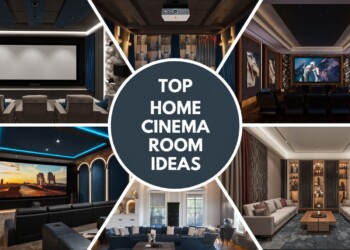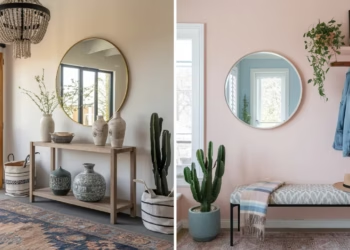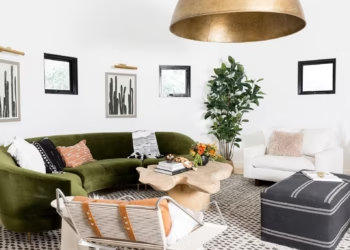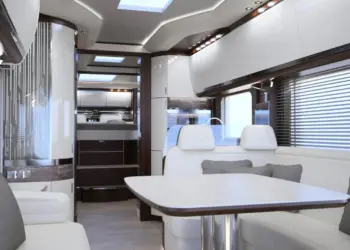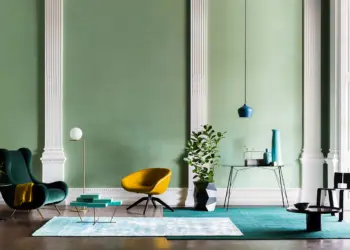In the competitive realm of interior design; a well-crafted portfolio serves as a gateway to showcasing one’s unique style, creativity, and expertise. Whether you are a seasoned professional or an aspiring designer, curating an impressive interior design portfolio is a fundamental step in establishing your presence in the industry and attracting potential clients and collaborators. This comprehensive guide will navigate you through the intricacies of creating an exceptional interior design portfolio, providing valuable insights, practical tips, and inspiring examples to help you curate a compelling and visually captivating portfolio that reflects your distinctive design sensibilities and creative prowess.
Table of Contents
1. Introduction of interior design portfolio
In the dynamic world of interior design; a portfolio serves as a powerful visual narrative that communicates your design philosophy, showcases your creative versatility, and highlights your professional accomplishments and capabilities. It acts as a tangible representation of your design journey, offering a glimpse into your unique design aesthetic, style preferences, and technical expertise.
2. Understanding the Purpose
Before delving into the process of portfolio creation; it is imperative to comprehend the underlying purpose and significance of an interior design portfolio. It functions as a comprehensive visual dossier that encapsulates your design prowess, creative vision, and technical proficiency, serving as a persuasive tool for engaging potential clients, employers, and collaborators.

3. Identifying Target Audience
Identifying your target audience; is a crucial initial step in tailoring your portfolio to resonate with the specific preferences and expectations of your prospective clients or employers. Understanding the preferences, demographics, and design requirements of your target audience; enables you to curate a portfolio that aligns with their aesthetic sensibilities and design objectives.
4. Showcasing Style and Expertise
Your portfolio serves as a reflection of your unique design style and creative expertise. Capturing and highlighting your distinct design aesthetic, creative ingenuity, and technical proficiency; is essential in communicating your design philosophy and aesthetic sensibilities to your audience.

5. Selecting the Right Projects
Strategic project selection is; pivotal in curating an impactful portfolio that effectively demonstrates your versatility and proficiency in handling diverse design challenges and aesthetics. Carefully handpick a diverse range of projects that exemplify your design adaptability, problem-solving skills, and creative versatility.
6. High-Quality Visuals
The visual appeal of your portfolio; plays a pivotal role in captivating the attention of your audience and conveying the essence of your design aesthetics. High-quality images, renderings, and visual representations of your projects; are essential in showcasing the finer details, design elements, and material compositions, thereby leaving a lasting impression on your viewers.
7. Including Project Descriptions
Accompanying each project with detailed and engaging narratives provides a deeper insight into your design process, conceptual framework, and problem-solving methodologies. Utilize project descriptions as a medium to articulate the design challenges, creative inspirations, and innovative solutions that define your design approach and methodology.

8. Creating a Consistent Layout
A well-structured and cohesive layout is integral in creating a seamless and engaging browsing experience for your audience. Maintain a consistent layout, design format, and visual hierarchy throughout your portfolio to ensure easy navigation, enhanced readability, and a visually appealing presentation of your design projects and narratives.
9. Adding Personal Touches
Infuse your portfolio with personal anecdotes, design inspirations, and memorable experiences; that have shaped your design journey and contributed to your creative evolution. Intertwining personal narratives and reflections; adds a distinct and relatable human touch to your portfolio, fostering a deeper emotional connection with your audience.
10. Utilizing Online Platforms
Harness the power of digital platforms and online portfolio websites to amplify the reach and visibility of your design portfolio. Leveraging online platforms; allows you to showcase your work to a global audience, establish professional connections, and gain industry exposure, thereby enhancing your professional credibility and visibility within the design community.

11. Seeking Professional Feedback
Seeking constructive feedback and expert opinions from seasoned professionals, mentors, or industry experts can offer valuable insights and perspectives that can further enrich and refine your portfolio. Constructive criticism and expert guidance provide you with a comprehensive understanding of your portfolio’s strengths and areas for improvement, enabling you to fine-tune your portfolio for optimal impact.
12. Revising and Refining
Continuous refinement and iteration are vital in ensuring that your portfolio remains updated, relevant, and reflective of your evolving design journey and professional growth. Regularly revisit and revise your portfolio; to incorporate new projects, design achievements, and skill enhancements, thereby showcasing your commitment to excellence and design innovation.
13. Finalizing the Portfolio
Before presenting your portfolio to potential clients or employers; conduct a thorough review and final edit to ensure that your portfolio is polished, error-free, and professionally presented. Pay attention to the overall aesthetics, layout consistency, and content accuracy; to deliver a comprehensive and visually appealing portfolio that captivates and engages your audience effectively.

14. Portfolio Examples
1. Example : Modern Minimalist Portfolio; Incorporating clean lines, minimalistic aesthetics, and a subdued color palette, this portfolio emphasizes simplicity, functionality, and understated elegance, showcasing the designer’s proficiency in creating contemporary and minimalist living spaces that exude a sense of tranquility and modern sophistication.

2. Example : Eclectic Fusion Portfolio; Infusing vibrant colors, eclectic patterns, and diverse design influences, this portfolio reflects the designer’s penchant for creating eclectic, vibrant, and culturally inspired living spaces that celebrate diversity, individuality, and cultural heritage, blending traditional and contemporary design elements seamlessly.
3. Example : Scandinavian Chic Portfolio; Exuding warmth, comfort, and understated sophistication, this portfolio showcases the designer’s mastery in incorporating cozy textures, organic materials, and soft hues to create inviting and serene living spaces that epitomize Scandinavian design sensibilities and embrace the concept of hygge and comfort.

Curating an exceptional interior design portfolio demands a blend of creativity, strategic curation, and meticulous attention to detail. By implementing the aforementioned tips, insights, and best practices; you can develop a captivating and comprehensive interior design portfolio that resonates with your audience, showcases your unique design identity, and establishes your credibility and proficiency in the competitive landscape of interior design.
FAQs
How many projects should I include in my interior design portfolio?
The number of projects you include in your portfolio; can vary, but aim for a diverse selection of 8-12 projects that highlight your versatility and expertise across different design styles and project types.
Should I include my resume in my interior design portfolio?
Yes, including a concise and well-structured resume that outlines your educational background, professional experience, and notable achievements can provide your audience with a comprehensive overview of your qualifications and design expertise.
How often should I update my interior design portfolio?
It is recommended to update your portfolio every 6-12 months to incorporate new projects, skill enhancements, and design achievements, ensuring that your portfolio remains relevant, contemporary, and reflective of your professional growth.
What are some effective tips for creating a well-balanced interior design
To create a well-balanced interior design portfolio, consider factors such as project diversity, cohesive visual aesthetics, and engaging project narratives that collectively contribute to a harmonious and visually captivating portfolio presentation.
How can I effectively communicate my design narrative through my interior design portfolio?
To effectively communicate your design narrative, utilize expressive language, compelling visuals, and engaging project descriptions that narrate your design journey, creative inspirations, and design philosophy, fostering a deep connection and resonance with your audience.
How do I make an interior designer portfolio?
To make an interior designer portfolio, compile a comprehensive collection of your best design projects, ensuring to showcase a variety of styles and techniques, and organize them in a visually appealing and easily accessible format, either physically or digitally, to impress potential clients and employers.
What should an interior design portfolio include?
An interior design portfolio should include a diverse selection of high-quality design projects, including concept sketches, detailed floor plans, 3D renderings, mood boards, material samples, and before-and-after images, highlighting your design skills and creative approach.
How to make an interior design portfolio PDF?
To create an interior design portfolio PDF, gather digital versions of your design projects, including images, renderings, and descriptions, and use design software or online tools to compile them into a professional and visually engaging PDF document that can be easily shared and viewed digitally.
How long should interior design portfolio be?
The length of an interior design portfolio should be concise yet comprehensive, ideally featuring 10 to 15 of your best and most diverse design projects, along with clear and engaging descriptions that highlight your design process and creativity, ensuring that the portfolio remains engaging and easy to navigate for potential clients and employers.

